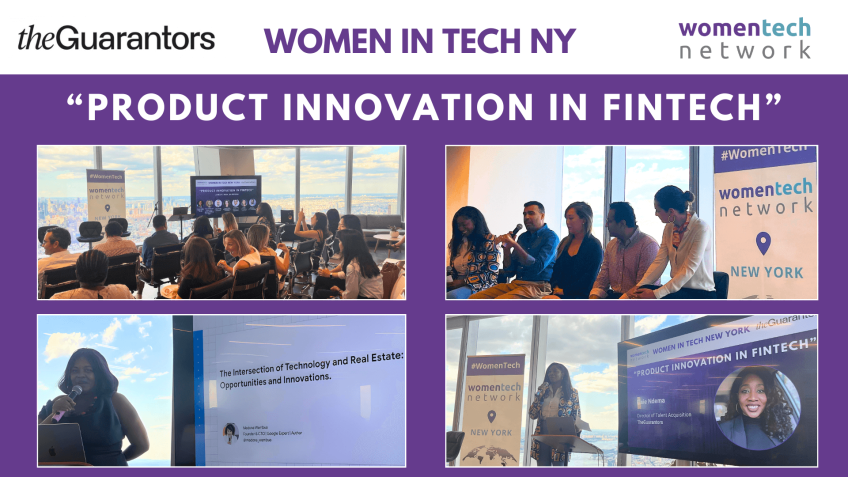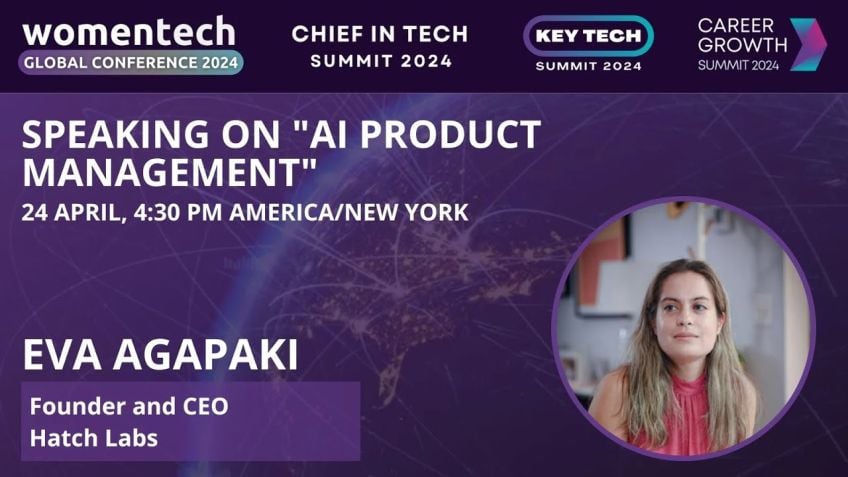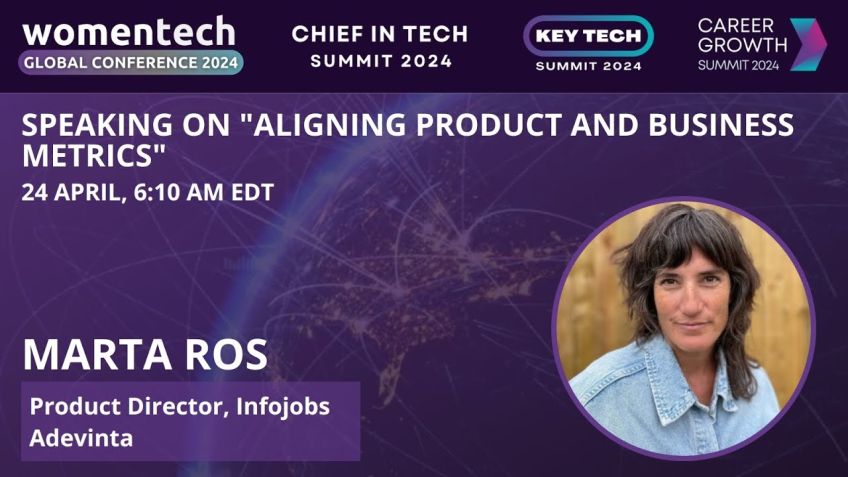The Art of Storytelling as a PM by Stina Pagliero
The Art of Storytelling in Product Development
Hello there! I'm Stina, the lead PM at Labster, a General Assembly PM instructor, and a seasoned professional in the product development sector with over a decade of experience. I've refined my skills in the edutech and fintech industries, B2B and B2C SaaS, and numerous hypergrowth start-ups in various countries. Currently, I'm located in Copenhagen, working with Labster, an edutech company fostering the next generation of scientists with our 3D virtual science experiences and lab simulations. Today, let's talk about the art of storytelling in product development.
Why Stories Matter in Products
"A good story is always made up of key parts - characters navigating a setting and solving a problem, leading to an ending."
Just like stories, customer journeys in a product - our conventional funnel - demand optimization, involving numerous stakeholders like engineers and designers. Product experiences have their unique tales to tell, influenced by a myriad of internal and external factors, such as discussions to enter new markets or decisions stemming from employee attrition.
The core concept to grasp is that the experience a product creates is a story. You don't need an epic to spark the inception of a story; a single detail or an idea can illuminate the path towards creating a narrative.
The Connection Between Storytelling and Product Development
Not every story appeals to the masses, and neither does every product. Some stories are private, shared between close friends, and some products solve niche problems. Invariably, effective story crafting within products hinges heavily on building empathy, staying curious, and advocating responsibility.
"...the best way to tell a story is actually to listen."
Active listening and truly being present allows us to truly comprehend what is being expressed or experienced - and jotting down these findings embodies them, lending them tangibility. We need to create secure spaces for innovation - for ideas to flow without the pressure of perfection. Sometimes, brilliance strikes in the seemingly insignificant details and changes we note down.
Key Takeaways and Exercises
- Create slides as if you're presenting your products to a board six months from now.
- Write a press release about your products a few years from now.
- Practice active listening in your next meeting or interview.
- Jot down your ideas in a notebook as they occur.
Remember, each product we develop encapsulates numerous stories. We, as part of the tech industry, bear the responsibility of ensuring that the right stories for the right people are told. So, let's create some memorable and impactful narratives - in work and life. Let the art of storytelling guide our product development journeys.
If you have any queries or require additional resources, feel free to get in touch. Here's to creating unforgettable stories with everyone in your work or life. Thank you for reading!
Video Transcription
OK, so, hi, everyone. Um I'm Stina and I'm here to talk to you about the art of tilling in product. Um I am currently a lead PM at Labster and I'm also a lead PM instructor at General Assembly.And my background is I have been in product for over 10 years now. I've also been um teaching the discipline for at least five years. Um I'm a published short story author and my background is in a combination of fintech and edutech um B to B and B to C SAS um as well as hypergrowth start ups. Um I've also worked in various countries all over the world um whether it's Europe, the Middle East or North America. Um And I'm currently based in Copenhagen. Um And for those of you who don't know, Labster is a um an edutech company that creates 3D virtual uh science experiences and lab simulations to help empower the next generation of scientists to um take on some of the world's most important challenges. So, um I want us to kind of anchor a little bit uh and to think of a really good story.
Um And I'm also gonna kind of just look care about, um, to think of a really good story, um, and to kind of anchor ourselves into, what about that story made it good. Um, to, to really think about whether it was in the last, uh, you know, meeting, whether it was, um, with your grandmother or with a, with a family member or someone really close to you. Um, and, and really anchor yourself to, to kind of what made it good. Um What about it really stuck with you? What were things that you um you, you took away from it just, just really about those kind of characteristics? Um And, and kind of to bring us back to this idea that stories really have kind of five key parts. Um There's always a character doing something, there's a setting, there's a problem, there's a solution. Um And there's an ending. Um And it's kind of like customer journeys in a product or what we traditionally think of as a funnel. Um We're always looking for how to optimize sort of like what that experience should be, whether it's with engineers or designers or different stakeholders in the company. Um And I want you to also think about some nontraditional instances that could also tell a story. So in each of these examples, whether it's a business case that the company needs to increase retention or maybe an engineer on the team is leaving or, um you know, should we go into new markets, like all of these have a character and a setting and, and maybe it's not the traditional user, but it's someone in the company that also has this, this experience um that you can also anchor to that journey.
Uh And really what that tells us is that the experience a product can create is also a story. Um Every part of it can be one and, and creating a story really starts with all it takes is one idea or one detail um that, that comes to mind in the built environment in, in an interview or, or anywhere. Um And one thing that I took away in, in my time at media is that anything can really be told as a story, like you could say once upon a time I had a computer or um but not every story is necessarily a public interest, like maybe the story you tell with your best friend or with someone that you know, is, is not something that might make it on to like the local news channel.
Um And it's kind of like that too with products, like not every product necessarily has a critical value or has critical mass that every person at the same time needs that story to be told. Um And so when we think about kind of like how we create products or how we create stories within those products, um we really start with some basic tools like building empathy. We, we think about like why something is such a pain point, why it's, it's so painful for someone to be going through that experience and we really relate to what they're dealing with, um, what they're going through. Uh, and, and we think about how terrible that would be if they continue to, to feel that way, it's, it's rooted in kindness in a lot of ways. Um, and we also stay curious about ourselves and others. So in order to, to write sort of a character or journey, you kind of have to know the way that that person would think. Um Or maybe enough about the way that you think to know why the way that you're trying to make um whatever that character in the story is think is that way. Um And that's a lot of responsibility.
So it requires um really going inwards and kind of learning a lot more about, about those moments. And I can't underestimate kind of ironically that the best way to tell a story is actually to listen. Um So often we go through meetings where we're waiting to say the next thing or we have a customer interview as P MS where we're thinking about, oh, what is, I hope they're gonna say that thing that I have a hypothesis about or, you know, you have a stakeholder that's like, well, I don't need to talk to customers because I know that this is what this problem is like.
We've all probably had those experiences. Um And it's really about just actively listening and being present with that experience to really take in like, what, what, what is being said. Um And we also write things down. Um There's a lot of major tech companies that have this theory of like, you know, you're writing out a vision, you're writing out the things, it's so important when you, when you write something down and you're able to transfer it into this idea, it becomes this thing that takes on a life of, of its own.
Um And it, it, it makes it tangible, makes it an object and it doesn't have to be perfect. It just, it needs to become something else that you can do something with. Um uh And, and I also in this remote environment, we create the space to think or get into a creative flow. So it's really also important that now when we're distributed in remote work and we have meetings that are about communicating, um We don't have those water cooler moments necessarily where you run into someone, an engineer and you're like, oh wouldn't it be cool if we do this thing because you just saw them and the idea came to you.
Um those all have to be scheduled now um lockdowns or, you know, global pandemic or not, like we need to get into the mindset to be able to get into a flow. Um When I write stories, those ideas just don't come to me. They, they take time, they take consistent writing down of just the idea. So many notebooks are filled with ideas that didn't make sense to me when I wrote them. And the same is true of some product feature ideas like um and then a couple, you know, days later, another thing I'll see in the environment comes up and I'll go, oh yeah, that's, that is the connecting moment. So really allowing yourself to get into that flow. Um And not attaching to the words of the details and the draft just getting something out. Um And knowing it doesn't have to be perfect, like, you know, you, you're not gonna create like a five part novel, you know, in the next day, but just starting just writing that first word down um and just seeing what comes with it um and letting it go knowing that those details are gonna change.
So I'll leave you with this um a couple exercises that you can do today uh that are kind of product focused, but also um to create some slides as if you're presenting to a board maybe six months from now about your products. Um What's on the slides? Uh Write a story or a press release about your products a couple of years from now. Um or, or just a couple more soft skill, listening moments like at your next meeting or your interview, like really listen, like don't think of what to say next or what point to make, like, just focus on your breathing and, and really see what, what you take away from that next moment.
Um Or next time you have an idea, like, just write it down, like in a notebook, don't, don't even think about it, like just, just, you know, and just the next and the next until this momentum happens where the ideas start to come. Um without you even knowing. Um And I think the, the one thing also that I'll leave with is is the responsibility that we within tech, but also just um people in general with their lived experiences have the power. Like people have the power through that story to communicate their lived experience. And if we look at products as sort of these many stories, we have a lot of responsibility to make sure that like the right stories for the right people get told. Um And so we have a little bit of time left. I want to uh make sure also that I did not uh like I isolate or anything or um yeah, and, and also open if there's any questions that I can like leave you with or um anything. But II I often find that especially in PM, you can, it can be so easy to be so analytical and business focused. And I think, you know, really starting with um compassion and, and going easy on yourself and, and reminding ourselves of like there is some creativity and, and connection that can be had in like the simplest details. So um I, I thank you all.
And if you have any questions, you are more than welcome. Uh If not, I hope that you go out and create some very beautiful stories with everyone uh in your work or in your life or anything. So, thank you all. Oh, I don't know, a couple. I can, I can share some links after s uh maybe within, I don't know in the next year or two. It's uh but yeah, thank you so much. Everyone. See you.





